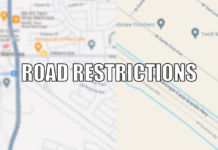As the student population of Maricopa Unified School District continues to swell, schools are starting to feel the strain.
The growth is forcing the district to find temporary solutions as it waits for a new school — an issue most glaring at the elementary level.
To meet the demands of the latest surge, MUSD recently bought and installed seven portable structures at six elementary schools. Each building is about half the size of a tennis court with twin classrooms inside that can house 26 students each.
Superintendent Tracey Lopeman is eager to have the new classrooms open this school year.
“The portables will provide additional learning spaces to accommodate for our growing student population,” she said, adding they “reflect our commitment and investment to student success and class size.”
Jacob Harmon, the district’s chief financial officer, said enrollment shows no signs of slowing. He told InMaricopa the district expects to welcome 850 new students by 2025, more than a 9% increase from 9,100 this year.
Harmon bases his yearly projections — 200 students this year, 400 next year and 250 the following year — on several variables including demographic studies, new permit data and development in the city.
Without the trailers, Maricopa’s elementary schools are on track to be short nearly four dozen classrooms next school year. The portable buildings will have to serve as a bandage for the next 4-5 years until the district gets state approval for construction of a seventh elementary school.
Although it’s on the radar, Harmon said the district may not qualify for another school until 2028 because of how the Arizona School Facilities Board calculates capacity.
According to the state board, the total elementary school classroom capacity is 4,933 students across the district’s six elementary schools. And MUSD won’t qualify for the necessary funding until the district exceeds that capacity. It ended last year with just 4,016 elementary school students.
However, Harmon believes SFB’s projections are “very, very conservative.”
“While I say we’re going to be over capacity, the state does not agree at this point,” he said.
“It’s not fair.”
Some things are out of the district’s control. The only way to change SFB’s policies is by lobbying for new state laws, presenting a major hurdle for Harmon.
But in the meantime, he regularly attends meetings at the state legislature in Phoenix, speaking on behalf of MUSD and spreading hope of another elementary school in the city.
“Luckily, we’re still a few years out,” Harmon said. “I have time to advocate, invite them out to actually walk our classrooms, and we actually have some plans to have them come out and see what we’re doing while we’re bringing in portables.”
He hopes to build strong relationships with SFB to establish a reputable track record for the district.
“Our goal is to have SFB agree with our growth projections and approve funding for an elementary school,” Harmon said.
Even if SFB approved the construction of a new building today, there’s a considerable lag between the rubber stamp and the start of construction. Alas, the district would need the portables regardless.
“We’re going to continue to work on a committee level,” Harmon said. “Talk to stakeholders and come up with a plan that takes into consideration multiple viewpoints.”
Lesser of two evils
Although learning in an unconventional classroom is not an ideal situation, portable classrooms have become a reality — love them, hate them or merely tolerate them.
The alternative? Overcrowded classrooms within the schools.
Harmon said the district considered other options, such as modular and conventionally framed classrooms, but ultimately decided against them.
The main reason was cost. Framed classrooms are 20% more expensive.
Portable classrooms, each one requiring a contingency for set-up costs, are $450,000 a pop. The structures are not connected to the school buildings but situated close by.
On the flip side, a traditionally framed classroom runs about $580,000 and wouldn’t be as convenient.
“Those portables give us the flexibility and the ability to move them in the future,” Harmon said.
The portables will only have plumbing for fire sprinklers, meaning they will not have bathrooms.
Harmon said restrooms are still a possibility in the future if they are needed. If the district wants to dole out additional dollars, that is.
“We are trying to do everything we can to maintain the student experience, maintain the classroom standards that we strive for,” Harmon said.
Long-term plan
The makeshift classrooms can be taken down, stored or relocated to other schools in the district.
The district plans to maintain possession of the portables — and even purchase more — to meet potential increases in student population.
“This is something that we are choosing to do and are happy to do,” he said. “We can afford to do it and plan to continue down this path.”
Lopeman said the portables are a preemptive strike against district-wide growth.
“It’s an investment in our staff,” Harmon added. “It’s an investment in our students. It’s an investment in the community.”
This story was first published in the August edition of InMaricopa Magazine.

![Portable classrooms outside of Butterfield Elementary School. Portable classrooms at Butterfield Elementary School. [Brian Petersheim Jr.]](https://www.inmaricopa.com/wp-content/uploads/2023/07/Portable-classrooms-BP.jpg)







![City gave new manager big low-interest home loan City Manager Ben Bitter speaks during a Chamber of Commerce event at Global Water Resources on April 11, 2024. Bitter discussed the current state of economic development in Maricopa, as well as hinting at lowering property tax rates again. [Monica D. Spencer]](https://www.inmaricopa.com/wp-content/uploads/2024/04/spencer-041124-ben-bitter-chamber-property-taxes-web-218x150.jpg)







